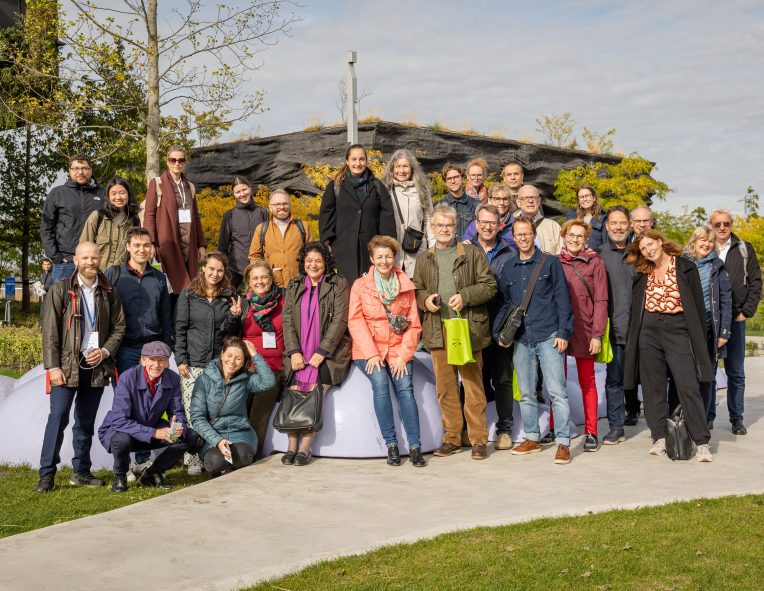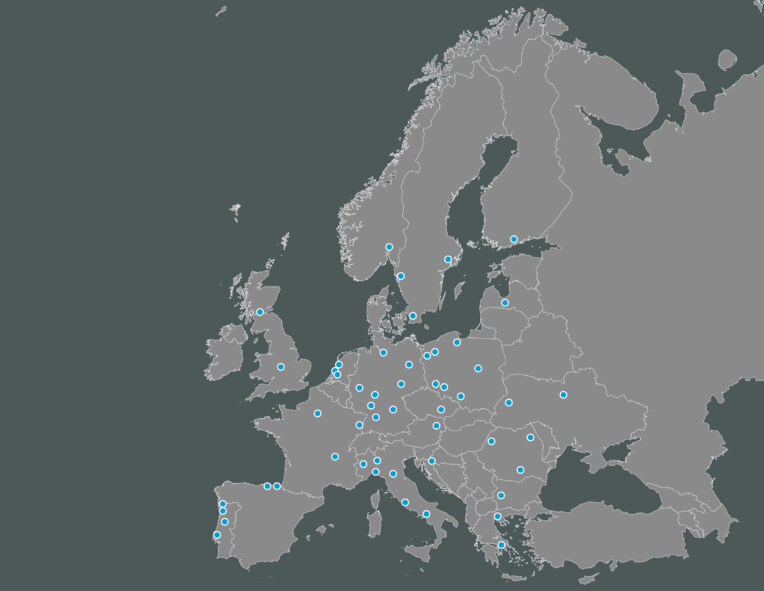April 2nd, 2025
10:30-12:30 CET
Online
A summary by Margherita Gori Nocentini, POLIMI
Metropolitan and regional actors from across Europe gathered to exchange knowledge and strategies to advance climate adaptation in metropolitan areas and regions. Participants shared experiences and discussed issues around three core themes: goal conflicts, connecting to and involving actors, and governance and funding.
-
Goal conflicts: uncovering and addressing possible tensions and conflicts
Many participants highlighted how goal conflicts, often invisible at first, pose real challenges in advancing adaptation.
- Mitigation vs. adaptation: competing priorities, especially in the building sector, create friction. For instance, efforts to improve energy efficiency might overlook resilience, or vice versa. Nature-based solutions (NBS) offer a pathway to address multiple goals, but they require new skillsets and cultural shifts (e.g. embracing “messy” landscapes for ecological function).
- Unclear metrics and criteria: it remains difficult to define what is “sufficient” adaptation. There is a lack of measurable thresholds for action, and future needs are uncertain, making it hard to argue for prioritization.
- Conflicts on land use: Helsinki exemplified how goal conflicts arise in concrete spatial terms, e.g. between building on coastlines vulnerable to sea-level rise, siting snow storage, and ensuring water source resilience.
- Long-term vs. short-term thinking: political cycles and varying levels of perceived urgency hinder sustained commitment. One interesting perspective brought forward was to reframe adaptation under the wider banner of “preparedness”, as done in Gothenburg.
-
Connecting to and involving the right actors
Adaptation cannot remain the domain of a few experts or environmental units, it must be mainstreamed across scales and across policy sectors for it to be effectively implemented.
- Broadening the circle: success stories included Brussels’ taskforces and alliances, where 150+ partners from public, private, and civil society sectors collaborate. Participants stressed the importance of including unexpected actors, from churches to banks, to increase buy-in and creative problem-solving.
- Local anchoring and multilevel collaboration: engagement at the local, from city to even neighbourhood level, is seen as essential but not sufficient in isolation. Multi-level collaborations are needed to link the local, metropolitan, regional, and national scales.
- Sharing responsibility: Milan’s approach to supra-municipal collaboration by creating a governance mechanism that distributes benefits and burdens of spatial transformations fairly, including those related to the green transition and adaptation, was appreciated as a method for unlocking cross-boundary cooperation.
- Creating awareness: in many municipalities, only a handful of staff understand adaptation. The need to spread awareness and make it tangible for those who will actually be tasked with implementing solutions was emphasized, especially considering the fact that usually there are no fixed deadlines or obvious drivers.
-
Governance and funding: building a durable framework
Participants agreed that climate adaptation must become a core function of governance, not an add-on.
- Embedding in core processes: several regions, including Brussels and Helsinki, use strategic planning and permitting processes to align development with climate goals. Permits were seen as powerful levers for change.
- Leveraging private sector engagement and societal responsibilities: Brussels shared examples of developers adapting their projects (e.g. reducing office space to integrate housing) to contribute to livelier neighbourhoods, after having been asked to do so. Dialogue with property owners and developers on their broader societal role, beyond usual environmental, social and corporate governance, was seen as a promising avenue.
- Diversified funding sources: blending public and private investment, including reinvesting savings from energy efficiency measures, is gaining traction. Funding remains a key bottleneck, but innovation is happening.
- Need for multi-level support: municipalities must be supported by regional and national frameworks.
Closing reflections
A recurring message was the need for persistent, sometimes “annoying,” advocacy within institutions to ensure adaptation is not overlooked. Participants recognized the importance of cultivating a sense of urgency, whether sparked by weather events or individual champions, and sustaining momentum through strong networks and shared visions for the future.
Thank you again to everyone who contributed. Let’s continue this collaboration to push adaptation forward together.



